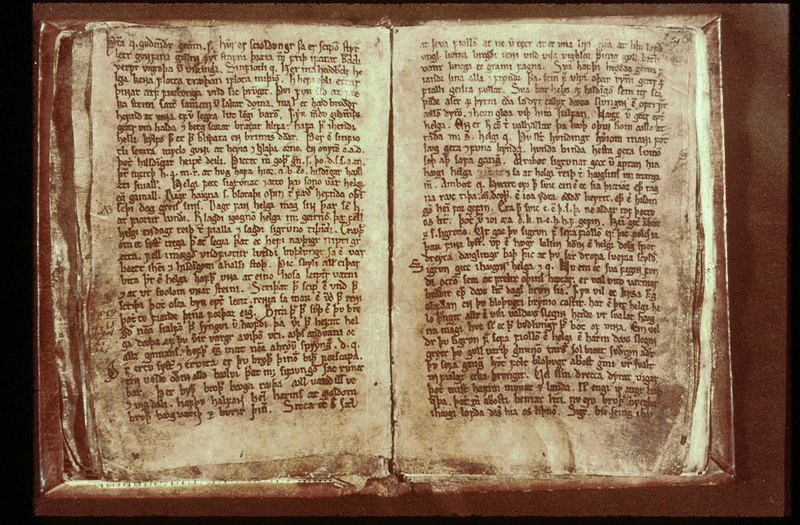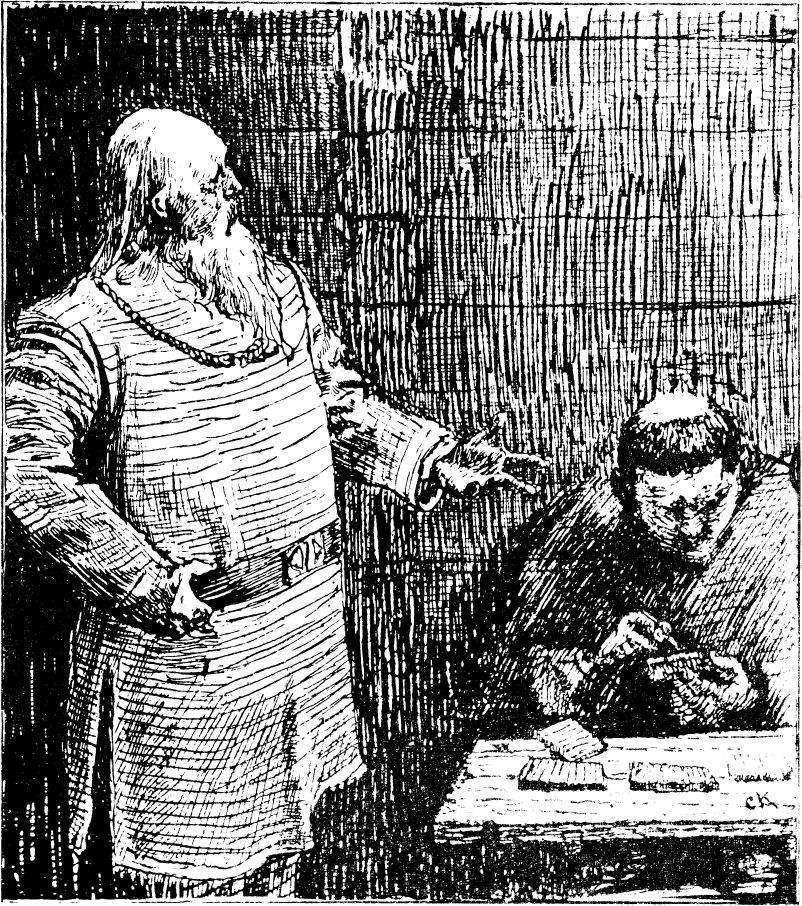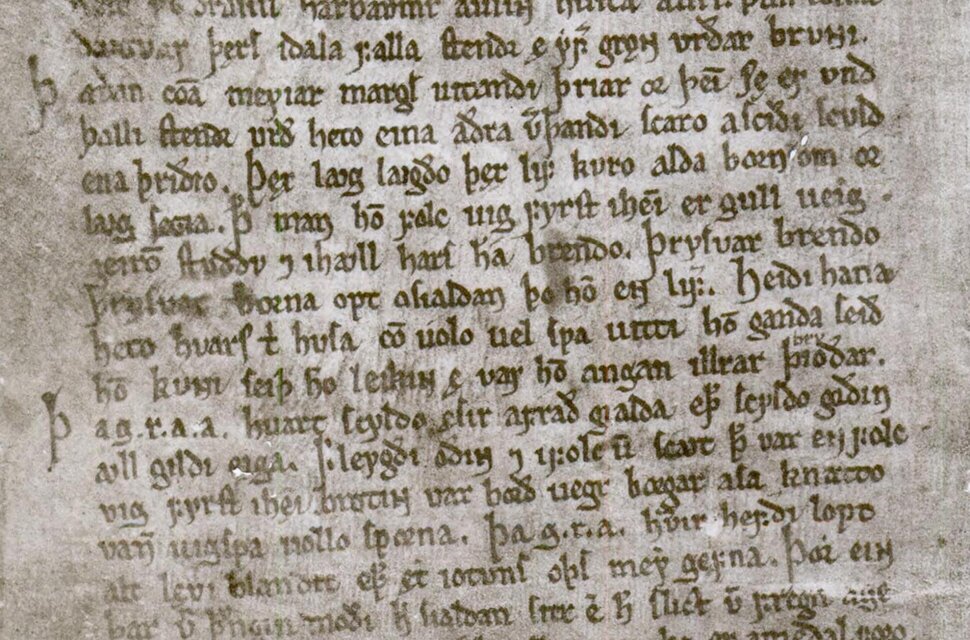The Poetic Edda is the contemporary name for an untitled series of anonymous Old Norse poems. It is different from the Prose Edda, also compiled by Snorri Sturluson. There are several versions, which all use texts from the Codex Regius, the Icelandic medieval manuscript containing 31 poems.
Sturluson was an Islandic politician, historian, and poet.
Background To the Poetic Edda
The Codex Regius was written during the 13th century, but its whereabouts were unknown until 1643 when Brynjólfur Sveinsson, then Bishop of Skálholt, managed to acquire it. At the time, there were other versions of the Edda in Iceland. Still, scholars speculated that there was likely another Edda, an Elder Edda, which contained the pagan poems Sturluson quotes in the Prose Edda.
Brynjólfur gave the Codex Regius as a gift to a Danish king – thus “royal book” from the Latin Codex Regius. It sat in Copenhagen’s Royal Library for centuries before returning to Iceland in 1971. Because the book was so valuable, it was taken home on a ship with a naval escort.
The Codex Regius is probably the most significant surviving source of German heroic legends and Norse mythology. It features many examples of the stressed meter using alliteration and strong imagery but without rhyme. Its influence on Scandinavian literature and poetic meter is powerful.
J. R. R. Tolkien was just one author who found inspiration in the Codex Regius.
*Make sure to check my article titled Is The Lord of the Rings Based On Norse Mythology?

What Does Edda Mean in the Poetic Edda?
The first time the word ‘Edda’ appeared was in the poem The Lay of Rig (Háttatal), written by Sturluson. Sturluson uses ‘Edda’ as a title for a great-grandmother.
Some have suggested that the work possesses wisdom and ancient knowledge, like a great-grandmother. However, others believe ‘Edda’ has close associations with the town where Sturluson was raised, Oddi.
Eddic is the adjective used to describe something from the Eddas.
What Was the Purpose of the Poetic Edda?
The compilation contains mythological poems and heroic poems. It is a definitive source of all Viking and Norse mythology, revealing facts about journeys, battles, and quests involving Odin, Thor, Loki, and others. It allows us to connect legends and obtain a clearer picture of Nordic myth.
The Poetic Edda allowed Icelandic readers of literature and poetry to grasp the subtle alliteration used in the verses and to understand the rich imagery and complex kennings (adjectival noun phrases) that were so commonly used in Skaldic poetry.
In What Language Was the Poetic Edda Written?
The book is in 13th-century Icelandic.
Aylett Sammes was the first person to write any English translation of the Poetic Edda. However, he translated the Loddfáfnir stanzas of Hávamál in 1676 from Latin and not Old Norse.
Which Parts of the Poetic Edda Should You Read First?
If you are curious about the origins of the Nine Realms and Ragnarök, you should read the Vǫluspá (or Voluspa), Vafþrúðnismál, or the Völuspá hin skamma (the Short Völuspá) in Hyndluljóð.
Thor’s exploits are always entertaining and appear in Þrymskviða (Lay of Thrym), Hymiskviða, and Alvíssmál (how he outwits the dwarf Alviss). His half-brother Loki is present in every poem, sniping and beguiling, in the extraordinary and entertaining Lokasenna. More witty conversation and verbal jousting between the gods feature in Hárbarðsljóð.
Hávamál is a poem dedicated to the considerable wisdom of Odin. Odin also features heavily in the Grímnismál.
Skírnismál deals with Freyr’s wooing of the beautiful giantess Gerðr. Heimdall appears in Rígsþula.
Legendary heroes feature as well as the gods. The Völsunga saga reads almost like a dramatic novel with Helgi Hundingsbane, Gudrun (wife of Siegfried), and tales of dwarves making magic swords and living as pikes or otters.
The mighty warrior Siegfried (or Sigurd) was the most famous member of the Volsungs, and his fantastic quest involving Brunhilde (or Brynhild) and Regin is one of the most famous tales of all Norse legend.
Some poems are very short, like Dráp Niflunga (Niflung) or Baldrs Draumar (Baldr’s dreams), which involves Odin’s journey to Hel, and function as bridges between longer stories.
Some of the poems are not complete. For example, there is only part of the poem Brot af Sigurðarkviðu. The remainder is in prose form in the Völsunga saga.
Other recommended verses are Grípisspá (Grípir’s prophecy), the heroic poem Atlakviða (The Revenge or Lay of Atli), Svipdagsmál, Oddrúnargrátr, and Reginsmál (recommended because it mixes prose and poetry).
What’s the Difference Between the Prose and Poetic Edda?
The Prose Edda is also called Snorri’s Edda, the Younger Edda, or just The Edda. It is a compilation of Old Norse tales compiled and written by Sturluson, also in the 13th century. Its style is noticeably different from the Poetic Edda, which recreates language from much earlier.
The Prose Edda is more detailed and written in a freer, more sophisticated manner. The Poetic Edda is bound by its more ancient, formal times and rules of poetry.
The Poetic Edda is a “modern” name for an unnamed collection of Old Norse poetry. It is sometimes called the Elder Edda.
About the Poetic Edda Author Snorri Sturluson
Snorri Sturluson was born in Hvammur í Dölum in 1179 and was part of the prosperous and powerful Sturlungar clan. The Althing, the Icelandic parliament, elected him as “law speaker” (a post common in Scandinavian countries) on two occasions.
He was also a historian and a poet and was most famous for compiling the Poetic Edda and writing parts of and compiling the Prose Edda. He also wrote the Heimskringla, a history of Scandinavian kings.
Parts of his life were quite colorful. He was once the most powerful chieftain in Iceland and raised an army to fight against his brothers, although they arrived at a diplomatic agreement before a battle was fought.
Snorri was politically involved with King Haakon IV of Norway, and the monarch sent a war party to assassinate Sturluson after he had disobeyed his orders. The troops killed him in the cellar of his house in 1241.

Where to buy the Poetic Edda
There are several versions available.
- Jackson Crawford, the American scholar, translator, and poet specializing in Old Norse, has published a version available on Amazon.
- Another version by Carolyne Larrington, a senior research fellow at Leicester de Montfort University, is available on Amazon.
- You can also find a version narrated by an Icelandic, Gunnar Cauthery, by clicking here.

